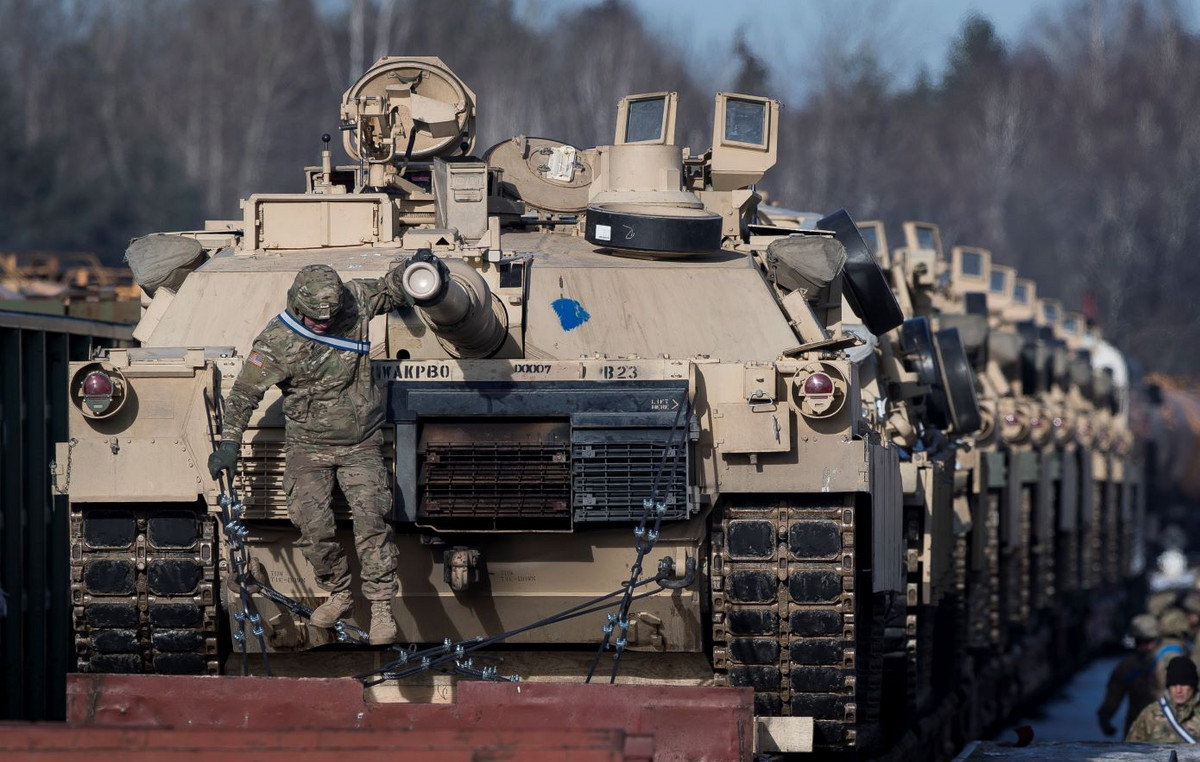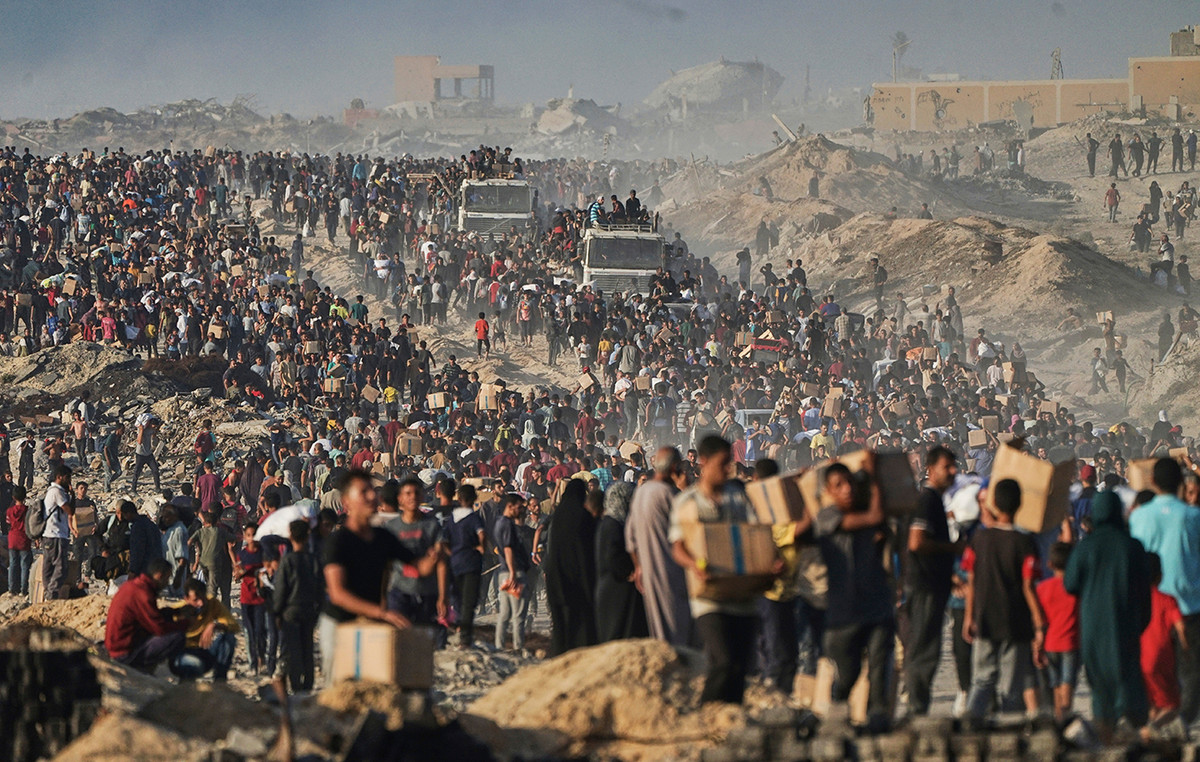When Amber Sizemore and her family took a trip out of state to celebrate her birthday last week, the expectation was that daughter Raegan would be able to swim. But the 15-month-old, normally full of energy and curiosity, was very different on the Saturday of the trip.
“She hated everything, and normally loves water,” said her mother. On Sunday, as the family returned to Ohio, the girl was “coughing madly.” “It was such a bad cough that she even threw up,” she reported. Raegan also stopped eating and developed a fever.
Unsuccessful with Tylenol, Sizemore took her to the health post and told the facility’s staff that RSV, or respiratory syncytial virus, a common cold virus, was circulating in the day care where the girl spends her day — and where, for sign, the mother also works.
The test for the presence of the virus was positive. As soon as they saw the baby’s vital signs, staff at UH Rainbow Babies & Children’s Hospital in Cleveland knew they had to admit her. She needed oxygen.
“They were all great here and took care of her, but the scariest part is, if I hadn’t already known she was exposed to RSV, I might have hoped to go it alone,” Sizemore said. “I’m glad I didn’t wait.”
Most children get RSV at some point before age 2, according to the US Centers for Disease Control and Prevention. Cases are usually mild. Symptoms can feel like a common cold and include a stuffy nose, decreased appetite, coughing, sneezing, fever, and wheezing. They usually last a week or two, and go away with rest and more fluid intake.
But in some children, especially young children, RSV can be dangerous, leading to dehydration, breathing problems, and more serious illnesses such as bronchiolitis or pneumonia.
Increase in cases
Now, according to doctors who spoke to the CNN there is an “unprecedented” increase in RSV cases among children in the US.
The CDC does not track RSV hospitalizations or deaths as it does the flu, but it said Thursday that there has been an increase in RSV cases in many parts of the country. Several children’s hospitals informed the CNN who were “overloaded” with patients at a time of year when it is unusual to see an increase in patients with this type of virus.
Overall, pediatric hospital beds are fuller than they have been in the past two years, according to federal data.
The US Department of Health and Human Services does not specify the reason for admissions, but about three-quarters of available pediatric hospital beds nationwide are currently occupied. By comparison, that occupancy was about two-thirds on average daily over the past two years.
“I have never seen this level of outbreak”
With the surge in RSV cases, the UH Rainbow hospital took in so many patients that it had to re-route some in early October, meaning it could no longer take on external emergency cases. The unit has resumed accepting patients, but remains overloaded with RSV cases.
There has been such a dramatic increase in cases in the state of Connecticut that Connecticut Children’s Hospital has been working in partnership with the state government and the secretary of public health to determine whether to ask the National Guard for help to expand its ability to care for small patients.
“I’ve been working on this for a long time. I have been at Connecticut Children’s for 25 years and I have never seen this level of outbreak specifically with RSV in our hospital,” she told CNN Dr. Juan Salazar, executive vice president and chief physician of the hospital.
In Texas, where cases usually occur in December or January, the Cook Children’s Emergency Department in Fort Worth is recording a significant number of cases of the virus. Nearly half the ICU is full of RSV cases, said Kim Brown, a hospital spokeswoman. Between October 2 and 8, there were 210 hospitalizations caused by this virus at Cook Children’s; a week later, 288.
One such patient is Jeff and Zoey Green’s four-month-old baby named Lindy, who was admitted to the hospital on Sunday. At the hospital, Lindy’s fever was so high that they even used artificial ice packs to cool her.
“I don’t know how, but she slept with ice packs on top of her,” said Zoey Green, holding an exhausted Lindy in the hospital. She said she is trying to keep her hydrated so she doesn’t have to go back to IVs. “We just want her to get better,” she blurted out.
Mallory Davis, an infection prevention specialist at Helen DeVos Children’s Hospital in Grand Rapids, Michigan, also reports an outbreak earlier than usual.
“We’re fully booked, and our numbers are still pretty high as we’re trying to figure out how to accommodate all the sick kids in the community,” said Dr. Davis.
Children’s Hospital Colorado has seen an earlier-than-normal increase in RSV admissions and is starting to record the season’s first flu cases, according to Kevin Messacar, an infectious disease specialist and associate professor at the University of Colorado School of Medicine.
“Since the end of the summer we have registered an increase in cases of rhinoviruses and enteroviruses, right after back to school, and now we have RSV and parainfluenza”, he detailed. “With flu season rapidly approaching what appears to be an early onset, we are concerned about the persistent increase in volumes of sick children requiring hospitalization.”
At UH Rainbow Babies, employees hope things don’t get too much worse. “I mean, I hope we’re at the peak right now, because if we’re not, help!” said Amy Edwards, associate medical director for pediatric infection control.
RSV cases can often fill hospitals, even outside of high seasons, as there aren’t many treatments and they can require several days of care in severe cases, Edwards said. Sick children “need oxygen support and therefore cannot stay at home,” she said.
Experts believe that US cases may be rising now due to the current phase of the Covid-19 pandemic.
The typical VSR season appears to have changed after everyone stayed home in 2020 and 2021 to prevent the spread of the coronavirus. Case counts were low and this created an “immunity gap”.
Children who would normally have been infected by the virus in those years are instead catching it now.

who is vulnerable
The CDC says that most children will catch the virus at some point in their lives before age 2. It is a highly contagious virus that often does not cause serious illness, except in the elderly, people with chronic heart or lung disease or a weakened immune system, and in some infants and children.
There is no specific treatment for RSV and no vaccine. Symptoms usually last a week or two and subside with plenty of hydration and rest.
For some children, however, it can be a much more serious illness. The virus can be especially dangerous for premature infants, newborns, children with weakened immune systems or neuromuscular disorders, and for children under age 2 with chronic lung and heart disease, the CDC says.
RSV can progress to bronchiolitis, in which the small airways can become inflamed and congested, or to pneumonia. A child may need to be hospitalized to receive extra oxygen or even mechanical ventilation.
How the virus spreads
An infected person can pass RSV through coughing or sneezing. If respiratory droplets land on a surface such as a doorknob or table and someone touches it and then touches their face, the person can become sick.
Symptoms
RSV is a common virus, but it can cause serious illness, especially in young children and the elderly. Symptoms can appear in stages and not all at once, according to the US Centers for Disease Control and Prevention.
Symptoms include:
- Congested nose;
- Decreased appetite;
- coughing and sneezing;
- Fever;
- Wheezing in the chest.
“In infants, the only symptoms may be irritability, decreased activity, and breathing difficulties,” according to the CDC.
It’s usually such a mild illness that adults don’t realize they have it or think it’s nothing more than a cold or allergy and interact with other people.
“It’s not a virus that causes fatigue, like the flu or Covid; the person feels good,” Edwards said. “But then your neighbor has that cute baby and you go visit, take something, kiss this brand new baby. You don’t feel sick. But, unfortunately, you pass the virus on to him, who may even be hospitalized afterwards”.
Older siblings can also transmit the virus to younger siblings. “Babies drool over each other and put everything in their mouths, so day care centers are also a focus of transmission,” Edwards said.
If your child is coughing or lethargic, or if he’s just looking like another child, it’s a good idea to take him to the pediatrician. There, he can be tested for RSV, flu, Covid-19, or strep throat. Pediatricians say an emergency room visit may be necessary if the baby is dehydrated; if you have difficult, labored, shallow or rapid breathing; if you have a high fever or bluish skin; or if you fail to respond. The CDC says most get better with medical care and can often go home after a few days.
How to avoid contamination
According to doctors, the best way to prevent RSV infections is to teach children to cough and sneeze into a tissue or their elbows instead of their hands. Also try to keep frequently touched surfaces clean.
“Hand hygiene is the single most important thing we can do to keep ourselves safe for ourselves and others,” advised Davis of Children’s Hospital in Grand Rapids. She tells people never to touch their face unless they have recently washed their hands.
When children or adults are sick, they need to do something fundamental: “Stay home when you’re sick so you don’t spread any respiratory illness you have.”
Sizemore, quoted at the beginning of the report with her daughter still hospitalized with RSV but now in better condition, also advises people to take the virus seriously.
“I would like other parents to know that you can’t wait for the cough to go away on its own, you have to take the symptoms seriously”, he advised. “The situation could have been a lot worse if I hadn’t turned to Raegan for help.”
* Brenda Goodman, Jamie Gumbrecht, Deidre McPhillips, and Chris Boyette of CNN contributed to this story.
Source: CNN Brasil
I am an experienced journalist and writer with a career in the news industry. My focus is on covering Top News stories for World Stock Market, where I provide comprehensive analysis and commentary on markets around the world. I have expertise in writing both long-form articles and shorter pieces that deliver timely, relevant updates to readers.


.jpg)




